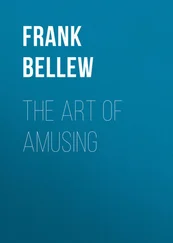Frank Abagnale - The Art of the Steal
Здесь есть возможность читать онлайн «Frank Abagnale - The Art of the Steal» весь текст электронной книги совершенно бесплатно (целиком полную версию без сокращений). В некоторых случаях можно слушать аудио, скачать через торрент в формате fb2 и присутствует краткое содержание. Год выпуска: 2001, ISBN: 2001, Издательство: Broadway Books, Жанр: Старинная литература, на английском языке. Описание произведения, (предисловие) а так же отзывы посетителей доступны на портале библиотеки ЛибКат.
- Название:The Art of the Steal
- Автор:
- Издательство:Broadway Books
- Жанр:
- Год:2001
- ISBN:9780767910910
- Рейтинг книги:4 / 5. Голосов: 1
-
Избранное:Добавить в избранное
- Отзывы:
-
Ваша оценка:
- 80
- 1
- 2
- 3
- 4
- 5
The Art of the Steal: краткое содержание, описание и аннотация
Предлагаем к чтению аннотацию, описание, краткое содержание или предисловие (зависит от того, что написал сам автор книги «The Art of the Steal»). Если вы не нашли необходимую информацию о книге — напишите в комментариях, мы постараемся отыскать её.
The Art of the Steal — читать онлайн бесплатно полную книгу (весь текст) целиком
Ниже представлен текст книги, разбитый по страницам. Система сохранения места последней прочитанной страницы, позволяет с удобством читать онлайн бесплатно книгу «The Art of the Steal», без необходимости каждый раз заново искать на чём Вы остановились. Поставьте закладку, и сможете в любой момент перейти на страницу, на которой закончили чтение.
Интервал:
Закладка:
A man who worked for a company called PairGain Technologies set up a website to resemble the Bloomberg business news site that many investors turn to for the latest business and financial news. He then posted an article on the site saying that PairGain was about to be bought by an Israeli company. To create further buzz, he wrote messages on bulletin boards with links to the fake Bloomberg site. The day he concocted the fraudulent story, PairGain stock rose about 30 percent before the company put out a release disavowing the report.
In another case, several criminals bought a hundred and thirty thousand shares in NEI Webworld, a bankrupt company whose assets had been liquidated several months before. Then they posted fake e-mail messages on hundreds of Internet bulletin boards, suggesting that NEI Webworld was going to be acquired by a wireless telecommunications company. Before the postings, the stock was trading at between nine and thirteen cents a share. On the morning of the postings, the stock rocketed to $15 5/16, before plunging back to a quarter a share. The criminals realized a gain of $362,625.
A twenty-three-year-old California man sent out a fake news release to Internet Wire, a company that distributes business news releases, saying that the chief executive officer of Emulex Corporation had resigned. He hadn’t, but within an hour of the release’s posting, the stock of the communications equipment maker plunged from $113 to $45. The actual value of the company declined by a staggering $2.5 billion. The hoax was quickly revealed, and the stock recovered. But investors who sold during the selling spree lost more than $100 million. In this case, the scam artist had sold shares short, betting on their decrease in price, and thus profited from the sharp fall.
The explosion in online trading has allowed mere kids, between their math and social studies classes, to dabble in securities fraud. We saw that when a fifteen-year-old New Jersey boy was caught by securities regulators in 2000, after he racked up profits of hundreds of thousands of dollars in a pump and dump scheme. The kid, who became the envy of a lot of other teenagers for his prowess, bought shares of lightly traded companies and then promoted them with hundreds of messages on Internet bulletin boards. When they soared, he bailed out. He was the youngest stock swindler the government has ever come across, but I fear he won’t be the last. When asked why he did it, he said, “Everybody does it.”
Part of the problem is that greed obscures judgment. Even though it makes no sense to risk your savings on unknown people who call you up or post messages on online bulletin boards, otherwise intelligent people seem to do just that with outright fervor. Here’s my favorite illustration of how ridiculous it can get. In 1994, the Motley Fool, a popular personal finance website, concocted a fictitious stock as an April Fool’s joke. They mentioned a company, Zeigletics, in their newsletter, and said it developed technology that connected sewage disposal systems in Chad and traded on the Halifax Exchange. Almost at once, messages turned up on financial bulletin boards discussing the merits of the company, and people actually tried to buy shares in it.
CAPER CRUSADERS
It’s astounding how far a con artist can take a securities scam. No matter how outlandish the pitch, there are investors who swallow it. Two New Jersey scam artists collected nearly $2 million by promising safe, high yields investing in wishing wells that solicited money for charity. In another case, a bunch of people saw no reason not to invest in an eel farm. If this seems far-fetched, it isn’t. The animal kingdom is actually quite well represented in the scam world. There are schemes centered on snail ranches and ostrich stud farms. There was an ostrich farm in Australia where the ads claimed, “The birds just won’t stop laying.” A coconut production business in Costa Rica was promoted on a website. The promoter said he had agreements with A&P for coconut chips.
A popular fraud has to do with selling “U.S. Dollar Bonds.” Scamsters who market them spin colorful tales of how they were issued in the 1930s and 1940s by the Central Intelligence Agency (CIA) to assist Chiang Kai-shek in fighting the communists. The way they tell it, the bonds were buried in caves by his generals and their descendants, and then lay there untouched until they were recently discovered; now you can buy them for just a fraction of their face value. The con artists print up official-looking Treasury bonds that they sell, and people do buy them, often clients in China, Taiwan, and Singapore.
No such Treasury securities were ever issued, and they don’t even look like anything the Treasury ever issued, as they often list the Ministry of Finance of the United States and the Washington Bank of America as their place of origin. Neither ever existed. Confront the con artists with this information, and they’ll say, “Well that’s the CIA for you, you know how they are.”
There are many instances of criminals essentially creating a shell company simply to attract investors. One of the most ambitious was the infamous ZZZZ Best carpet-cleaner caper. This was the one where a teenage swindler named Barry Minkow truly constructed a house of cards. In 1982, when he was sixteen and living in Reseda, California, he began a rug-cleaning business in the garage of his parents’ house. He called it ZZZZ Best. Friends admired his drive and lofty aspirations. The business always seemed prosperous, although in fact it lost money. But Minkow had thievery in his blood, and he raised capital to fund the business in ways that most corporations rarely consider. He orchestrated burglaries to collect insurance money. He forged money orders from a local liquor store. When customers paid with credit cards, he would add fraudulent charges to the accounts.
Feeling the need for a bigger arena, he created a fake appraisal company that purportedly arranged restoration work for insurance companies. A bizarre friend of his became the company’s head. The fake appraisal company created fictitious paperwork indicating that Minkow’s company had received contracts from insurers to restore fire-damaged buildings. Minkow used this fictitious business, confirmed by the appraisal company, to persuade bankers and investors to give him money. Out of thin air, he concocted endless contracts from insurance companies to tackle office buildings that had been devastated by fire and water. He had an associate draw up forged documents representing the contracts, but there were no actual carpets to restore. Investors looking into the business would be referred to the fake appraisal company, which confirmed the deals. One time, when an auditor wanted to look at a restoration, the company hurriedly leased a building and dressed it up to look like a work site. It fooled the auditor.
In 1986, Minkow took his ruse of a carpet-cleaning company public, and the market capitalization swelled to more than $200 million. His young age captivated the press, and he gained wide publicity, which served to further stimulate investor interest. The fraud began to unravel when word got out about Minkow’s credit card overcharges. Once investigators began probing the company, the end was near. In 1988, Minkow was convicted of fifty-seven counts of fraud and sentenced to twenty-five years in jail. Investors lost more than $100 million.
THE FORECAST? STORMY
Many of the most successful investment scams work their prey slowly, reeling them in like a trout. That’s how the forecaster scam works. A man who identifies himself as a broker calls or writes you and, insisting no obligation on your part, offers you an investment tip. He tells you about a stock to watch that he thinks is going to do very well in the near term. “I don’t want you to buy the stock, or even think of investing any money with me,” he insists. “After all, you don’t even know me. Just keep an eye on this stock and see how it does.” Ostensibly, his point is to demonstrate his market savvy, and the sort of market intelligence he’s privy to. His real point is to set a trap.
Читать дальшеИнтервал:
Закладка:
Похожие книги на «The Art of the Steal»
Представляем Вашему вниманию похожие книги на «The Art of the Steal» списком для выбора. Мы отобрали схожую по названию и смыслу литературу в надежде предоставить читателям больше вариантов отыскать новые, интересные, ещё непрочитанные произведения.
Обсуждение, отзывы о книге «The Art of the Steal» и просто собственные мнения читателей. Оставьте ваши комментарии, напишите, что Вы думаете о произведении, его смысле или главных героях. Укажите что конкретно понравилось, а что нет, и почему Вы так считаете.












